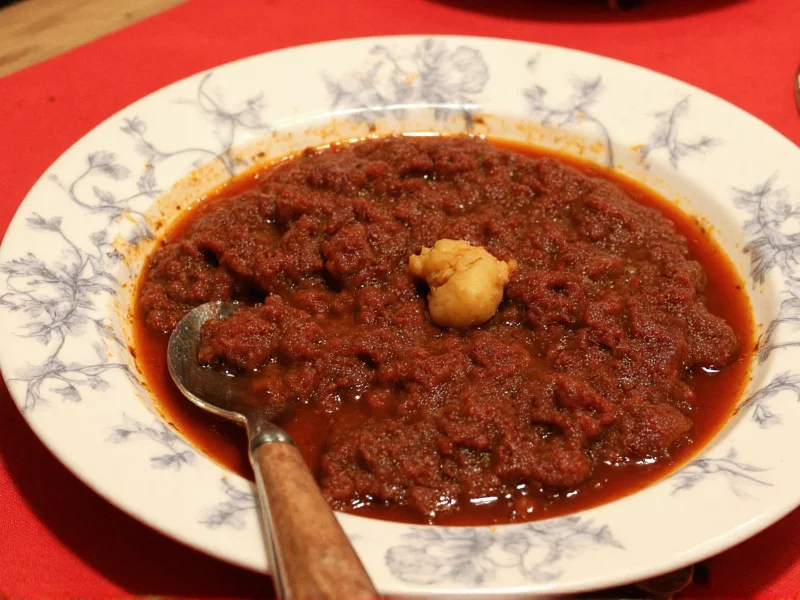Understanding Pasilla Peppers: Mexico's Culinary Secret
Often confused with fresh poblanos, pasilla peppers represent the dried form of this versatile chile. When shopping for authentic pasilla recipes, understanding their unique characteristics proves essential. These wrinkled, dark brown to black peppers measure approximately 6-8 inches long and deliver nuanced flavor rather than intense heat. Professional chefs prize pasillas for their ability to add depth to sauces without overwhelming other ingredients.
Where to Find and Select Quality Pasilla Peppers
Mexican grocery stores typically stock pasilla peppers in the dried chile section, while specialty food markets and online retailers offer them year-round. When selecting pasillas, look for deeply wrinkled, uniformly dark peppers with a leathery texture and rich aroma. Avoid any with mold spots, excessive brittleness, or faded color. Properly stored in an airtight container away from light, dried pasillas maintain quality for up to one year.
| Chile Type | Heat Level (SHU) | Best Substitutes | Flavor Profile |
|---|---|---|---|
| Pasilla | 1,000-2,500 | Ancho + Mulato | Smoky, raisin, tobacco |
| Ancho | 1,000-2,000 | Pasilla | Sweet, dried fruit |
| Mulato | 2,500-3,000 | Pasilla | Chocolate, licorice |
Essential Preparation Techniques for Pasilla Recipes
Before incorporating pasilla peppers into authentic pasilla recipes, proper preparation unlocks their full potential. Start by removing stems and seeds using kitchen shears, then shake out loose seeds. For most traditional Mexican pasilla recipes, briefly toast the peppers in a dry skillet over medium heat for 15-20 seconds per side until fragrant but not burnt. This crucial step enhances their complex flavor profile. Rehydrate toasted peppers by covering with boiling water and steeping for 15-20 minutes until pliable. Reserve the soaking liquid for sauces to capture maximum flavor.
Classic Pasilla Pepper Recipes Worth Mastering
Authentic Mexican cuisine features pasilla peppers prominently in several signature dishes. Mole negro, Oaxaca's famous complex sauce, relies on pasillas as its foundational chile. This labor-intensive recipe combines rehydrated pasillas with chocolate, spices, and nuts to create a sauce traditionally served over turkey. For home cooks seeking approachable pasilla pepper recipes, roasted pasilla salsa offers an excellent starting point. Blend rehydrated pasillas with roasted tomatoes, garlic, onion, and cilantro for a versatile condiment perfect with tacos or grilled meats.
Modern Pasilla Pepper Applications
Contemporary chefs increasingly incorporate pasilla peppers into fusion cuisine. Try adding pureed rehydrated pasillas to chocolate desserts for subtle heat, or blend them into barbecue rubs for smoky complexity. For easy pasilla pepper recipes for beginners, consider a simple pasilla cream sauce: simmer rehydrated peppers with heavy cream, garlic, and a touch of honey until smooth, then strain and serve over roasted vegetables or poultry. This technique showcases how dried pasilla chile recipes can transcend traditional Mexican boundaries while honoring the pepper's distinctive character.
Storage and Preservation Methods
Preserve the quality of your pasilla peppers by storing them in airtight containers away from heat and light. For extended storage, freeze rehydrated and pureed pasillas in ice cube trays, then transfer to freezer bags for convenient use in future recipes. When working with dried chiles, always wear gloves to prevent skin irritation from capsaicin oils. Properly handled, these versatile peppers maintain their distinctive flavor for months, making them valuable pantry staples for authentic Mexican cooking.











 浙公网安备
33010002000092号
浙公网安备
33010002000092号 浙B2-20120091-4
浙B2-20120091-4